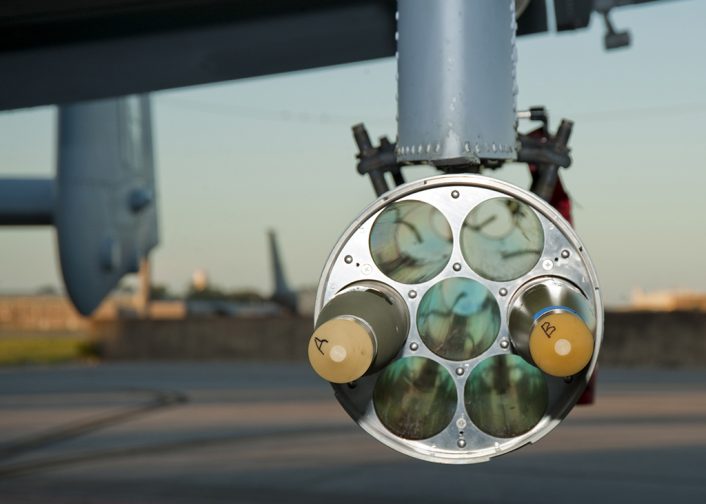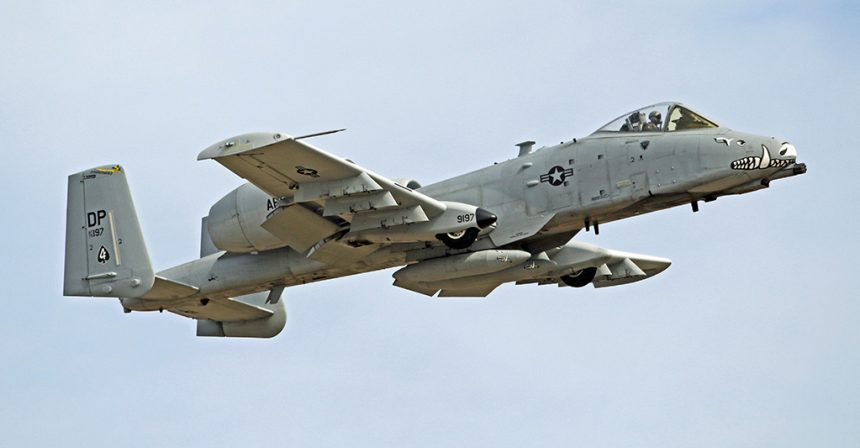Incident is Second Accidental Weapons Release in 2019 for aging A-10.
A U.S. Air Force A-10C Thunderbolt II from the 354th Fighter Squadron accidentally discharged an M156 air-to-ground rocket outside Tucson, Arizona on Thursday morning, Sept. 5, 2019. No injuries were reported in the incident.
The aircraft was conducting a training mission in one of the live-fire air delivered weapons ranges surrounding Tucson when the incident occurred. The live rocket, a variant of the common 2.75” air-to-ground rocket, landed in an uninhabited area near Mt. Graham inside the Jackal Military Operations Area (MOA). The area, a common range used by aircraft from Davis-Monthan AFB and many other installations, lies approximately 60 miles northeast of the city of Tucson, where Davis-Monthan AFB is located. Some sources reported the air-to-ground rocket was a smoke rocket used for marking targets.

This is at least the second accidental release of air-to-ground weapons from an A-10 this year. On Monday, Jul. 1, 2019, an A-10 from Moody AFB, Georgia was involved in a bird strike incident that resulted in the loss of three practice bombs over a restricted bombing range in northern Florida. There were no injuries in the incident. The practice bombs, which contain no significant amount of explosives, only a small explosive charge for signaling their impact point to pilots, were not recovered. The incident occurred about 54 miles (87 kilometers) south of the base near Suwanee Springs in Northern Florida.
Yesterday’s second accidental A-10 ordinance release incident comes only 20 days after the announcement of a major upgrade program for the aging USAF A-10 fleet.
The USAF awarded a contract to Boeing for upgrading the wings of its A-10 Thunderbolt II attack aircraft. The new contract, announced on Aug. 22, 2019, will provide up to 112 new wing assemblies for the A-10C and will cost approximately $999 million dollars. According to reports, 27 wing assemblies are to be completed for the Air Force’s A-10 fleet immediately, with the remainder of the upgrade project to be completed by August 2030.
The A-10 is one of the oldest combat aircraft in the U.S. arsenal. It first flew 47 years ago on May 10, 1972. Critics of retiring the aging A-10 say the Air Force has no dedicated ground-attack and anti-armor aircraft planned to replace the A-10. Supporters of retiring the A-10 argue that its communications capability is outdated in the real-world, on-demand airstrike environment.









